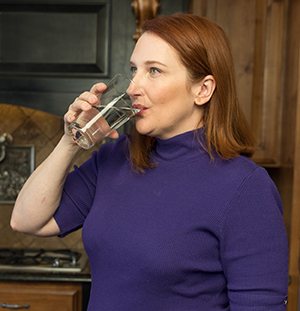After an ileostomy, it may be harder to digest foods that are high in fiber, such as raw vegetables, popcorn, and nuts. Eaten in large amounts, these foods can clump together. Then they get stuck in the small intestine, causing a blockage. You need to know the signs of a blockage and what to do if you have one.
Signs of a blockage
A blockage can be an emergency. That’s because you can lose fluids (get dehydrated) quickly. The intestine can also burst. Most likely, you’ll never have a blockage. But you need to know the signs just in case you do.
-
At first, you may have an almost constant spurting of very watery stool. This watery stool is able to get past the blockage.
-
You may feel bloated or have cramping. The stool may have a strong odor. The stoma or the skin around the stoma may swell.
-
If the blockage remains, the flow of stool will stop totally. Then you’ll have increased pain, often leading to an upset stomach (nausea) and vomiting.
What to do
You can try one or more of the following:
-
Put on a pouch with a larger opening.
-
Gently massage your abdominal area and the area around the stoma.
-
Lie on your back. Pull your knees to your chest and rock from side to side.
-
Take a warm bath or shower for 15 to 20 minutes to relax the abdominal muscles.
-
If it's not too painful, take a short walk or just walk around the house.
-
Don't eat any solid food.
-
If there is some stool output, you can drink some fluids.
-
Don't take any laxatives or stool softeners. They cause your body to lose more water.
When to call your doctor
Contact your health care provider or ostomy nurse, or go to the nearest hospital emergency room if:
-
You have increased pain, nausea, and cramping with nothing produced from your stoma in 2 hours or more.
-
You start to vomit.
Ways to help prevent a blockage
Sometimes a blockage happens no matter what you do. But you can help prevent a blockage.
-
Drink at least 8 to 12 cups (2 to 3 quarts) of fluids, such as water or juice, each day or as directed by your health care team.
-
Chew your food slowly and thoroughly.
-
Eat only small amounts of foods that are high in insoluble fiber or cellulose. These include raw vegetables, unpeeled fresh fruits, bamboo shoots, bean sprouts, cabbage, celery, coconut, corn, mushrooms, pea pods, dried fruits, nuts, seeds, popcorn, and hot dogs and other meats in casings.
-
Limit your intake of bran and other high-fiber grains, such as granola.


